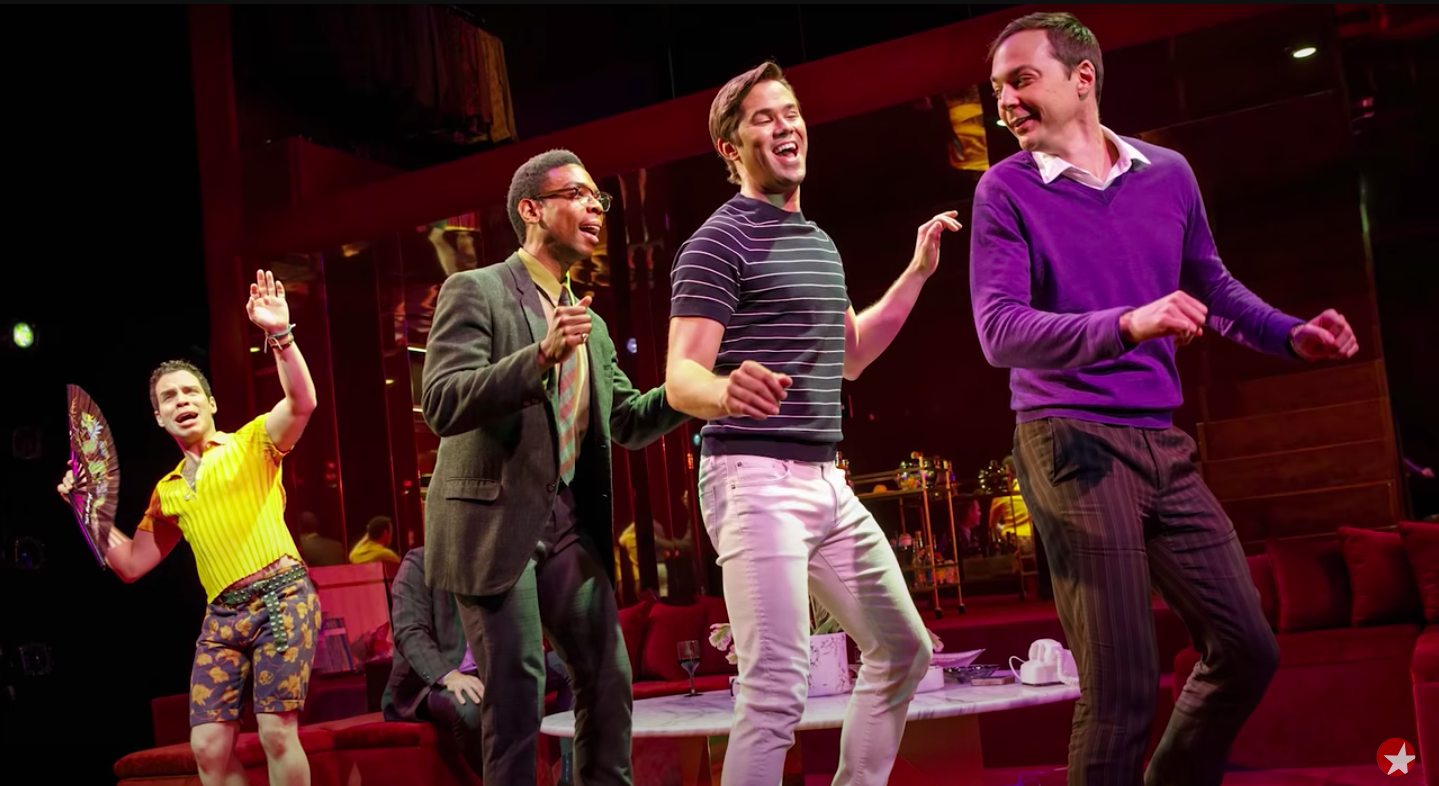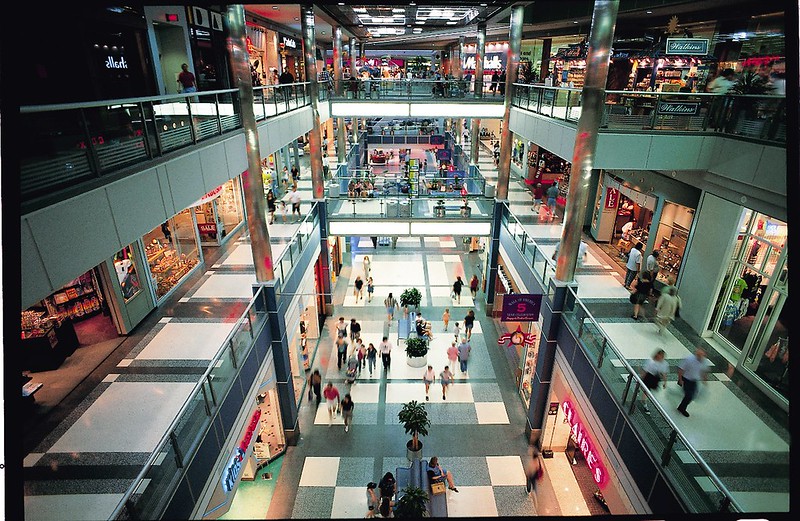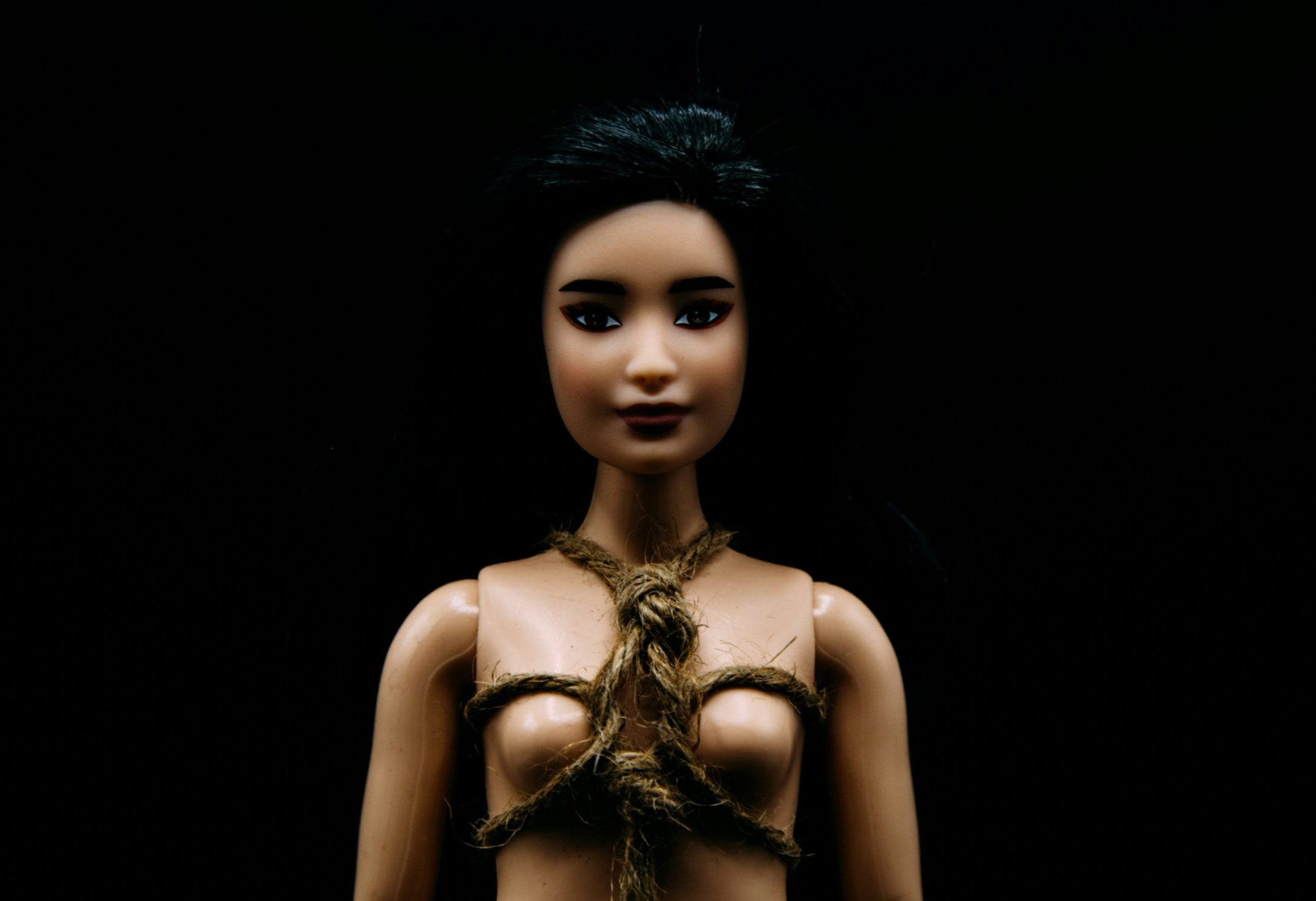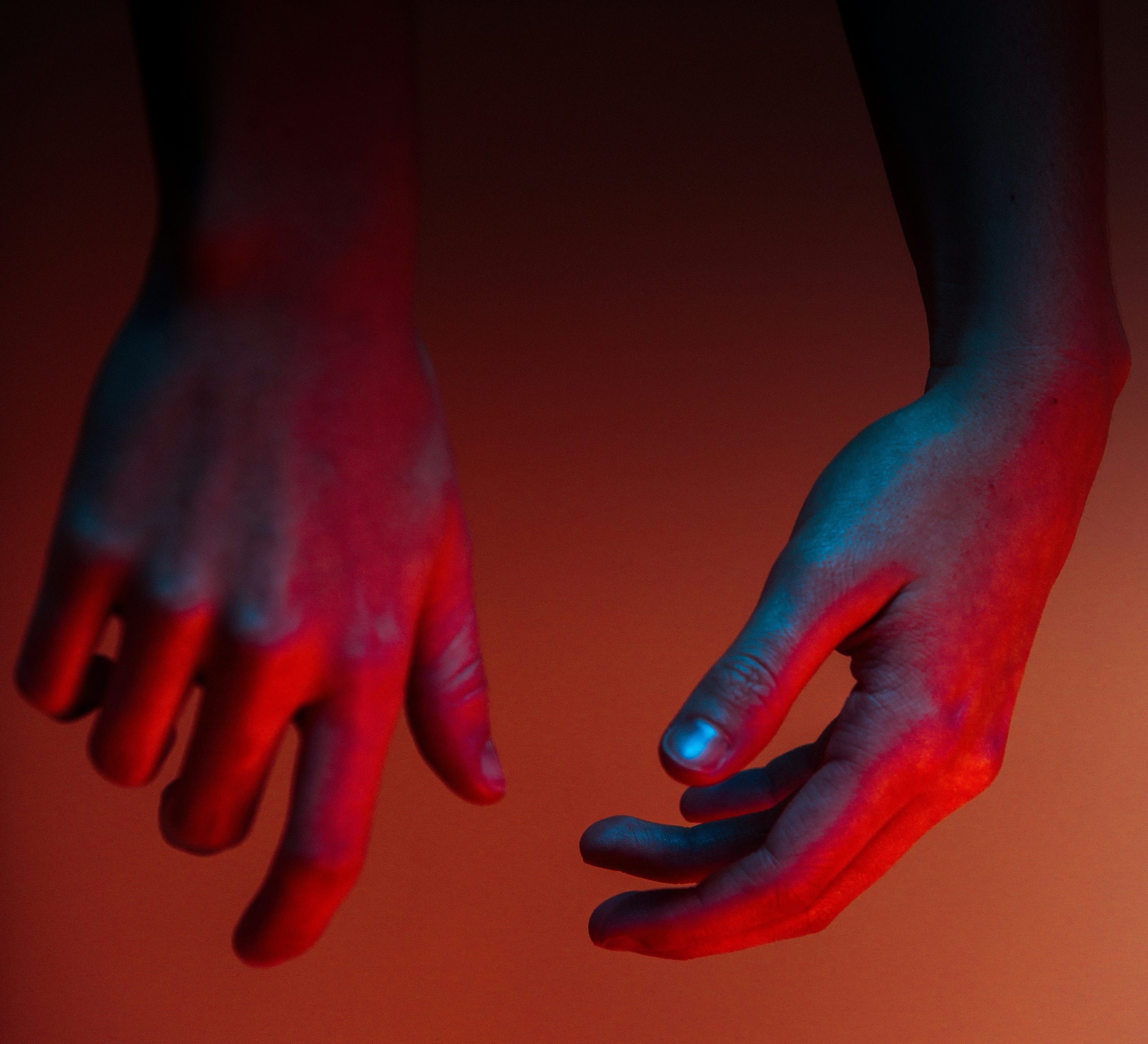Books & Culture
The Magic of the Gay Male Ensemble Performance
The enduring appeal of the homosexual group dynamic in theater

Nothing seems to rally theatre fans quite like a play starring, and about, attractive, complicated gay men. In London, The Inheritance, Angels in America, and A Little Life are among the most important cultural events of the last decade. But beneath the erotically charged marketing campaigns featuring solemn, turtleneck-clad or partially nude actors draped over one another, it’s worth considering why, time and again, we turn to a collective group of gay peers to tell our stories in theatre. When I think about the canon of important modern theatre, the most prominent gay representation comes in the form of shows with an ensemble of gay characters: those I mentioned above, as well as The Boys in the Band and Love! Valour! Compassion! being notable examples. This has led me to wonder: is a choral cast structure necessary for an authentic representation of gay lives and stories—or is it mere coincidence?
So far in the canon of theatre, it appears that gay men are most truthfully represented when gayness is the default, rather than a token, an exception, or a novelty to be exploited for plot. It can feel like a trope, one existing in parallel to famous scripts about groups of women (e.g., Sex and the City, Little Women, Girls, Golden or otherwise), in which the absence of male protagonists is intrinsic to the story’s DNA. It’s fitting, however, that queer people have taken to the stage (rather than the screen) to hold court. Theatre is where, for centuries, characters have raged and grown and pushed against the boundaries of human experience through emotional expression. This is best—and perhaps exclusively—true for gay men. Of course, stories in which we are the comfortable majority, aren’t reflective of most contexts in daily life (a shame, really)—but is that not the power of theatre? To wield suspended disbelief for effect? Theatre allows us to manufacture the optimal conditions for emotional journeys in profound, entertaining, and transformative ways, which, for a multitude of reasons, have not always been afforded to queer people in real life.
So what is the root motivation driving this trend? Is an isolated gay character’s emotional depth more limited than when several gay men go through something together? Or is it just a convenient marketing tool—instead of trying to appeal to both straight and gay audiences, these plays go all-in on the reliable audience of gay male theatre fans by filling billboards with only gay faces? I believe the most compelling argument for the group of gay men phenomenon, which characterizes theatre’s enduring gay stories, is this: for many gay men, historically, it is with our friends and peers (chosen family, if you like) that we achieve the fullest emotional development. There is strength in numbers, and there is strength in the shared experiences of pain and joy. It follows that dramatic catharsis is therefore most present in the ensemble gay play.
It’s possible that, after watching a show like The Boys in the Band or Angels in America, audiences will want to see one protagonist’s arc teased out to its full multifaceted potential, separate and apart from the chorus of other characters. Yet, often in these stories, the queer lead is forced into conflict with straight people (or other antagonists) who act as obstacles to their biggest struggle, which is gayness. Frankly, it’s not that interesting to watch; conflict with straight people based on our sexual differences is such a small part of day-to-day gay life, and yet it is weirdly overrepresented in media. Certainly, our most dynamic cultural portrayals are in the spars and passions within a queer group dynamic. Gayness ceases to function as a weapon or a demon because it describes all of our protagonists. We become layered individuals informed by gayness, rather than narratively defined by it.
Queer people frequently have stunted, fraught, and dishonest relationships with their families, but one environment in which we can fully (and theatrically!) express the complicated truth of our inner lives is among our peers. Playwrights like Tony Kushner, Larry Kramer, and Terrence McNally recognize and harness this. The tensions in plays like The Boys in the Band reminds me of explosive family plays; finally we get to play out what heterosexual characters play out in Who’s Afraid of Virginia Woolf or August Osage County. In plays with majority straight characters, it is too tempting to use a gay character’s closeted status as fodder for conflict, thereby limiting the potential for that character to grow on their own terms.
A Little Life, currently playing in London’s West End, complicates the trend. Of the titles mentioned, this is the one with the least cathartic climax, and least generous portrayal of complex queer characters. For Jude, the arguably “main” character, devastation reigns regardless of the community he finds himself in. I suspect it comes down to the writer. Hanya Yanagihara, while an exceptional storyteller, doesn’t have the same personal stake in her narrative as the writers of other plays in this model. She is not depicting her own community, and the homogeneity portrayed in The Inheritance or Love! Valour! Compassion! is disrupted in A Little Life, with a messier sweep of queer identities commanding the stage. I want to be very clear: this approach is neither better nor worse; Yanagihara’s is just a different project with a different impact on the ongoing history of queer theatre (and I will be interested to see how it holds up in terms of longevity).
The group cast structure, however, gets us close to some sense of a collective wider experience.
Perhaps what has kept plays like Love! Valour! Compassion! and The Boys in the Band so alive in the cultural conversation, and in people’s hearts, is that they move beyond stereotyping (the enemy of authentic representation). The burden is lifted from one single character to represent the universal queer experience, with all our virtues and vices. I see this all the time in plays with one queer character—it’s a ludicrous paradox because there isn’t a universal queer experience. A token simply cannot be a character. The group cast structure, however, gets us close to some sense of a collective wider experience. For example, if we look at Love! Valour! Compassion!, most of the characters are actually really annoying and the idea of spending not one, but three summer weekends with them is frankly horrifying, except for the fact that they are all so beautifully and tenderly nuanced. They love and hate and have relatable, textured personalities. Plays like these reflect the truth that we are not a homogenous monolith; fixed types or preconceived notions of queerness disappear because we see a spectrum of gender presentation, of sexual promiscuity, of emotional maturity. These characters are allowed to be angry at something other than coming out or homophobic abuse. Those struggles are real but—shock! horror!—are not all we think about. When a queer storyline is transparently inserted, audiences can all but picture the writer thinking: “this will make it all a bit more interesting, a bit different, look at me ticking the inclusive box.” But when queerness is central to a group, there is an element of neutrality that lets more original thinking and tension take hold.
A lot of modern plays centering queer men focus on the coming out conflict or the crisis of hookup culture in our communities, which is interesting and relevant and can be a fruitful site for drama. But these stories also miss much of the reality of our lives. This essay is not a call to arms. I am not asking playwrights to shoehorn an abundance of gay characters into their work, nor am I dismissing theatre featuring very few or no gay characters. I would rather see zero gay characters on stage than one-dimensional ones superficially included in the name of diversity. Community is such a central pillar of the queer struggle, and it is in staging and presenting a very explicit sense of community (no matter how fraught) that we can present ourselves as a valid force made up of variegated voices and bodies and lives.
To me, the magic of the gay male ensemble show is that queerness becomes arbitrary, which happens so rarely in public life, where queerness is almost always a signifier. Our goal should not necessarily be for arbitrary queerness to be the norm. That said, it is clear that it is a model that has connected with audiences, gay and straight alike, for decades. When queerness is not a transgression on stage, it is allowed to be the beautiful identity and experience that it is in real life.








